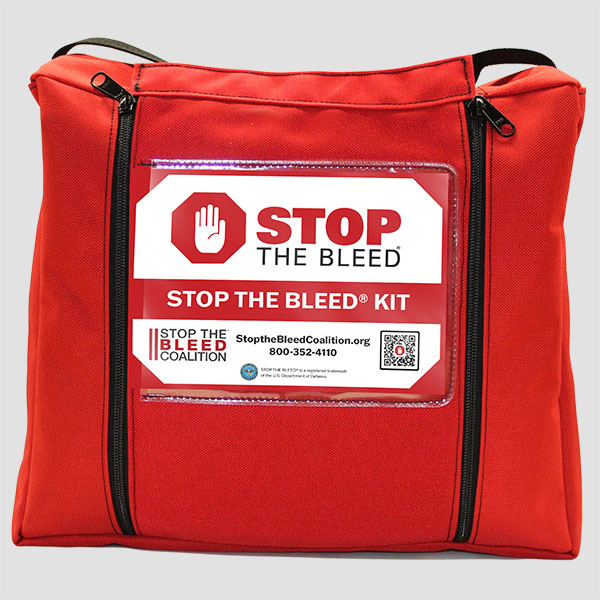Bleeding kits are essential tools used in emergency situations to control bleeding and provide first aid. They typically contain items like:
Dressing and Bandages: Sterile gauze pads, trauma dressings, and elastic bandages for applying pressure.
Tourniquets: Devices designed to apply pressure to a limb to control severe bleeding.
Antiseptic Wipes: For cleaning the area around a wound to reduce the risk of infection.
Medical Tape: To secure dressings in place.
Gloves: Disposable gloves to protect both the responder and the victim.
Scissors: To cut clothing or dressings as needed.
Instructions: Guidelines for proper use of the kit and how to manage bleeding.
It's important for individuals and organizations to keep these kits well-stocked and easily accessible, especially in environments where injuries are more likely to occur, such as workplaces, schools, or outdoor activities. Regularly check expiration dates and restock items as needed. Would you like to know more about specific components or how to use them?

1. AED Device
The main defibrillator unit, which is designed to analyze heart rhythms and deliver an electric shock if necessary.
2. Adult and Pediatric Pads
Electrodes that attach to the patient’s chest. Many AEDs come with both adult and pediatric pads, or pads that can be used for both.
3. User Instructions
Clear, step-by-step instructions for operating the AED, often available in multiple languages. Some cabinets also include visual guides.
4. CPR Mask
A barrier device to provide rescue breaths safely during CPR.
5. Gloves
Disposable latex or nitrile gloves to protect the responder during a medical emergency.
6. Scissors
For cutting clothing to access the chest if necessary.
7. Alcohol Wipes
For cleaning the area where the pads will be placed, ensuring good adhesion.
8. Emergency Contact Information
Instructions on who to contact for emergency services and internal emergency protocols.
9. Signage
Clear signs indicating the location of the cabinet and instructions for use, often featuring bright colors for visibility.
10. Battery and Maintenance Log
Some cabinets include a log to track the maintenance and checks of the AED, including battery replacement and pad expiration dates.
Considerations for Installation:
Accessibility: Ensure the cabinet is easily accessible to both staff and guests.
Visibility: Use bright colors and clear signage to mark the location of the AED cabinet.
Regular Checks: Implement a routine for checking the contents of the cabinet to ensure everything is stocked and functional
Installing bleeding kits in hotels is a proactive step toward ensuring guest and staff safety. Here are some key considerations and steps for implementation:
1. Assess Risk Areas
Identify high-risk areas such as kitchens, pools, gyms, and event spaces where injuries are more likely to occur.
2. Choose Appropriate Kits
Select bleeding kits that are suitable for your hotel's needs. Consider including items like tourniquets, sterile dressings, and gloves.
3. Strategic Placement
Position kits in easily accessible areas, clearly marked for visibility. Consider locations like:
Reception desks
Housekeeping areas
Employee break rooms
Near first aid stations
4. Training Staff
Provide training for staff on how to use the kits effectively. This can include:
Basic first aid training. We provide free CPR training






